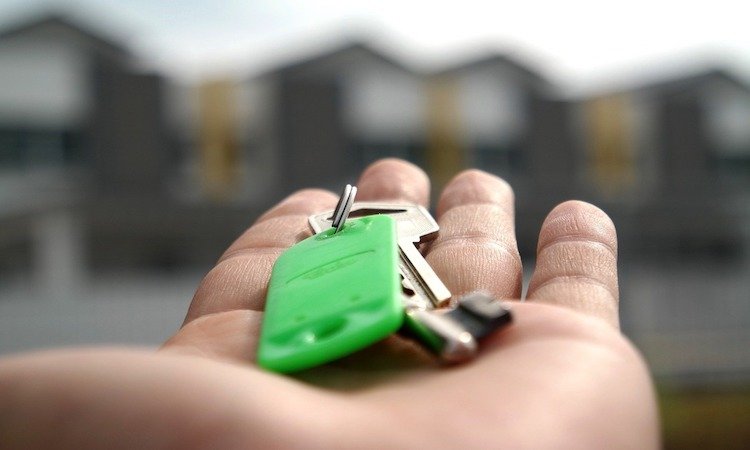Mortgages are what most people use to buy their homes today. Despite this, it still feels almost taboo to talk about them in most companies – as if it’s some big secret that pretty much everyone is in debt for one reason or another. Today, I’d like to do my part to help destigmatize the conversations surrounding these important topics.
To do so, I’d like to focus on mortgages specifically, and how you can go about refinancing them. Refinancing seems to be a pretty hot-button topic right now, so it only feels appropriate to go about it this way. Home loans are a part of our lives whether we like them or not, so it doesn’t hurt to get a bit more familiar with them even if you’re not sure what refinancing is.
So, if that’s something that interests you, do be sure to stick around. I’ll be covering home loans in general, as well as diving into refinancing and how it works in this context. Since mortgages are the most common sort of credit agreement to go through that process with, this shouldn’t be too difficult to follow along with!
Mortgages – the Basics
We’ll start off nice and simple since I know how complex financial stuff can be when you’re reading about it. Mortgages are home loans. Plain and simple, that’s all that they really are. You can of course read about them more in-depth here, https://www.cnbc.com/select/what-is-a-mortgage-and-how-does-it-work/, but there’s not much more to it in terms of getting a definition.
Getting a bit more complicated, though, they typically do not cover the entire cost of a home. Buyers are still expected to pay the down payment in most parts of the world – although, there are a few notable exceptions. For instance, in Norway, you can find home loans that will also cover the down payment.
That’s not always going to be the case, though, so just bear that in mind as you consider which lender to work with – especially if you are a first-time homeowner. This is one of the biggest limiting factors for folks trying to buy a home, seeing as those down payments can be quite hefty depending on the property. Consider looking internationally if you’re having that problem.
The other thing that’s pretty important to be aware of is that they are considered to be “secured” loans, which means that they have collateral. In the case of mortgages, that collateral is obviously the property itself. Unfortunately, that means if the borrower is unable to make their repayments or defaults on the loan for some other reason, the lender can repossess the home. It’s a bit scary, honestly, but that’s where our next topic comes into play.
Refinancing – What You Need to Know

Refinancing is a process in which a borrower applies to take out a new loan that allows them to pay off their previous debts to replace the terms of them with the new one. In essence, you can adjust the parts of your initial contract that are no longer working for you – or that you’re just not a fan of anymore. You certainly don’t have to wait until there’s an emergency at hand to initiate it.
Now, in terms of refinancing a boliglån, thankfully there isn’t much of a change versus doing it for any other type of credit agreement. In fact, the only real thing that’s different is the scope – obviously, most mortgages are for a significantly larger sum of money than a credit card or a personal loan. So, for a home loan, the overall figures are probably going to be bigger.
Thankfully, though, there’s not a whole lot else that will change if you’re just going for the “basic” refinancing strategy of altering the terms of your initial mortgage. That could look like altering how long your repayment period is, changing the interest rate, or adjusting your monthly payment amounts.
What Can You Achieve by Refinancing Your Mortgage?

When you decide to refinance, you can also consolidate at the same time. It’s a handy trick that I wasn’t aware of for a long time, but it can make a big difference in terms of financial planning for the future! After all, if you’re able to condense several credit agreements with different bills and interest rates into one, usually as a borrower, it’s quite beneficial.
In order to do that, though, it’ll take some careful consideration and planning on your end. As you can learn on this page, there are some positives and negatives to going through with debt consolidation, which is a pretty big part of how this type of refinancing operates. If you’ve got a financial advisor, now is the time to keep them clued in as far as what you’re doing.
You might even want to get their advice on this since it’ll have an impact on your financial well-being for years to come. Decide whether or not it’s really going to be worth it for you – with all the moving parts, it can sometimes be hard to consider all of the ramifications at once (hence the suggestion to get a second opinion).
If you do condense some or all of your other debts into your mortgage, you might end up with a higher monthly payment or a longer loan term. However, you’ll also not have to worry about fifty different bills that you’ve got to pay on time and juggle keeping track of all of your logins. Instead, it will be one simple payment each month.
Convenience versus overall costs is a hard thing to decide between, I’ll admit. Unfortunately, when you’re adding onto the total balance by incorporating other balances into the mortgage refinance loan, it’s bound to end up having a higher monthly payment, interest rate, or length of time that you’ll be responsible for the bills.
Thankfully, we can plan ahead for changes like that, especially if it’s something that we consider to be worth it. Just be sure to remember that because mortgages are secured loans, your new ones will be as well (though there are some exceptions, once again). My Norwegian audience does have the opportunity to get a home loan without that collateral, so it is probably a bit safer there to go about this without the risk of losing your home.
For one final note, I’d like to point out that if you’re struggling to make your mortgage payments, you should bring this up with your lender as soon as possible. Don’t wait until you’re in total crisis mode to begin applying for refinancing loans. It can take some time to process the paperwork on the lender’s end, so banking on a quick turnaround may not be the right move.
So, the earlier you start, the better. Remember – it’s okay to need to do something like this. Don’t be afraid to ask for or seek out help.

